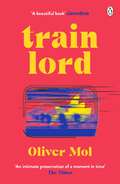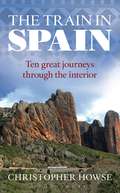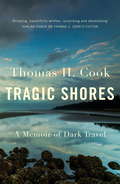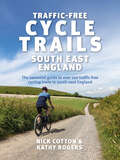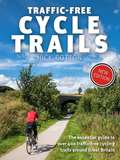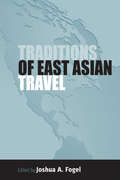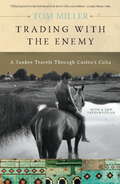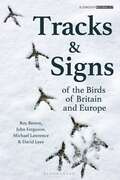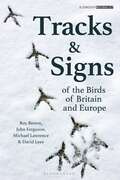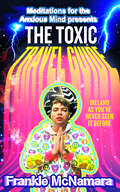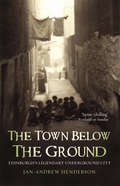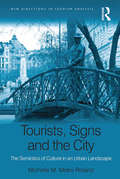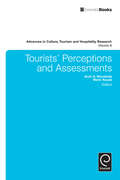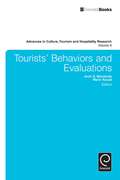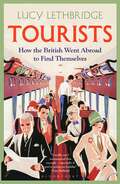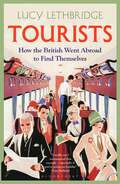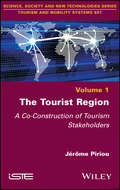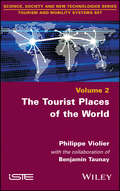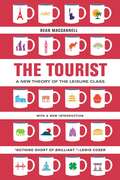- Table View
- List View
Train Lord: The Astonishing True Story of One Man's Journey to Getting His Life Back On Track
by Oliver MolThe astonishing true story of trust, pain, becoming lost, and finding a way back to yourself despite it allWhat happens when a writer can no longer write? What happens when pain is so intense that you question who you are and whether you can bear it any longer?Oliver Mol was a successful, clever, healthy twenty-five-year old. Then one day the migraine started.For ten months, the pain was constant, exacerbated by writing, reading, using computers, looking at phones or anything with a screen. Slowly he became a writer who could no longer write, and a person who could no longer communicate with the modern world. In literature, and life, Oliver began to disappear.His doctors couldn't figure out how to fix him. He suffered a breakdown. And one evening, high on painkillers, Oliver Googled the only thing he could think of: 'full-time job, no experience, Sydney'. An ad for a train guard appeared and, desperate, Oliver took it.For two years Oliver watched others live their lives, observing the minutia and intimacy of strangers brought together briefly and connected by the steady march of time. Exquisitely written and bravely told, Train Lord is a searingly personal yet universal book, which asks what happens when your sense of self is suddenly destroyed, and how you get it back.
The Train in Spain
by Christopher HowseThis is not a book about trains but about the variety of Spain. The bestselling author Christopher Howse makes ten great railway journeys that explore the interior of the peninsula, its astonishing landscapes and ancient buildings. The focus is the way the Spanish live now: their habits, streets, characters, stories – and quite a bit about their eating and drinking.Christopher Howse has been travelling around Spain for 25 years, and has now made a 3,000 mile circumnavigation by train from the top of the Pyrenees – through the vulture-haunted wilds of Extremadura and the Spaghetti Western deserts of the south, to the ancient hilltop city of Cuenca and beyond. On the way he meets troglodytes, visits a city ruined by an earthquake, runs into a dancing lion, stumbles across a body-snatching plot and tries out a recipe for acorn pie. An entertaining exploration of a much-loved country, The Train in Spain gives a fascinating and entirely original portrait of a strange land at a time of great change.
The Train in Spain
by Christopher HowseThis is not a book about trains but about the variety of Spain. The bestselling author Christopher Howse makes ten great railway journeys that explore the interior of the peninsula, its astonishing landscapes and ancient buildings. The focus is the way the Spanish live now: their habits, streets, characters, stories – and quite a bit about their eating and drinking.Christopher Howse has been travelling around Spain for 25 years, and has now made a 3,000 mile circumnavigation by train from the top of the Pyrenees – through the vulture-haunted wilds of Extremadura and the Spaghetti Western deserts of the south, to the ancient hilltop city of Cuenca and beyond. On the way he meets troglodytes, visits a city ruined by an earthquake, runs into a dancing lion, stumbles across a body-snatching plot and tries out a recipe for acorn pie. An entertaining exploration of a much-loved country, The Train in Spain gives a fascinating and entirely original portrait of a strange land at a time of great change.
Tragic Shores: A Memoir of Dark Travel
by Thomas Cook'I have come to thank dark places for the light they bring to life.'Thomas Cook has always been drawn to dark places, for the powerful emotions they evoke and for what we can learn from them. These lessons are often unexpected and sometimes profoundly intimate, but they are never straightforward.With his wife and daughter, Cook travels across the globe in search of darkness - from Lourdes to Ghana, from San Francisco to Verdun, from the monumental, mechanised horror of Auschwitz to the intimate personal grief of a shrine to dead infants in Kamukura, Japan. Along the way he reflects on what these sites may teach us, not only about human history, but about our own personal histories.During the course of a lifetime of traveling to some of earth's most tragic shores, from the leper colony on Molokai to ground zero at Hiroshima, he finds not darkness alone, but a light that can illuminate the darkness within each of us. Written in vivid prose, this is at once a personal memoir of exploration (both external and internal), and a strangely heartening look at the radiance that may be found at the very heart of darkness.'A fascinating, troubling memoir from a fine writer' Mick Herron
Traffic-Free Cycle Trails South East England: The essential guide to over 100 traffic-free cycling trails in South East England (Traffic-Free Cycle Trails #2)
by Nick Cotton Kathy RogersTraffic-Free Cycle Trails: South East England by Nick Cotton and Kathy Rogers features over 100 great cycling routes across the South East, London and into Eastern England. A companion guide to Nick Cotton’s much-loved and bestselling Traffic-Free Cycle Trails, this guidebook provides an additional fifty routes to discover across the south-east of England – all away from traffic.As well as more off-road trails for gravel bikes and the latest cycle paths, this book also includes a variety of routes on former railway paths, canal towpaths and forest trails, allowing you to discover previously unknown local trails. Presented in an easy-to-use format, this guide includes information on public transport, repairs and bike hire, as well as updated refreshments and parking details. From friends looking for a fun-packed day out on the trails to parents planning safe rides with children, let Traffic-Free Cycle Trails: South East England take the work out of finding your next favourite cycling route.
Traffic-Free Cycle Trails: The essential guide to over 400 traffic-free cycling trails around Great Britain
by Nick CottonTraffic-Free Cycle Trails by Nick Cotton contains over 400 cycle routes in Great Britain. First published in 2004 and regularly updated ever since, it has become one of the country’s most popular cycling books, and this fourth edition published in 2020 features a large number of updates and revisions.Traffic-Free Cycle Trails includes a great variety of routes on former railway paths, canal towpaths and forest trails in England, Scotland and Wales – and every ride is away from traffic. For that safe and peaceful bike ride, increasingly the target of families and leisure cyclists alike, Nick Cotton’s guidebook has proven invaluable.Discover previously unknown local trails, plan fun rides for all the family, and travel to unfamiliar areas throughout the UK with quality routes. Presented in an easy-to-use format and packed with useful information in ten regional sections, it includes route descriptions of rides in every part of Britain. From novice riders looking to escape traffic to parents planning safe rides with children, let Traffic-Free Cycle Trails take the work out of finding the UK’s best cycling routes.
Traditions of East Asian Travel
by Joshua A. FogelAlthough the topic of travel and travel writing by Chinese and Japanese writers has recently begun to attract more interest among scholars in the West, it remains largely virgin terrain with vast tracts awaiting scholarly examination. This book offers insights into how East Asians traveled in the early modern and modern periods, what they looked for, what they felt comfortable finding, and the ways in which they wrote up their impressions of these experiences.
Trading with the Enemy: A Yankee Travels Through Castro's Cuba
by Tom MillerGranted unprecedented access to travel throughout the country, this lively travelogue presents us with rare insight into one of the world's only Communist countries. "Havana knew me by my shoes," begins Tom Miller's lively and entertaining account of his sojourn for more than eight months traveling through Cuba, mixing with its literati and black marketers, its cane cutters and cigar rollers. Its best-known personalities and ordinary citizens talk to him about the U.S. embargo and tell their favorite Fidel jokes as they stand in line for bread at the Socialism or Death Bakery. Miller provides a running commentary on Cuba's food shortages, exotic sensuality, and baseball addiction as he follows the scents of Graham Greene, José Marti, Ernest Hemingway, and the Mambo Kings. The result of this informed and adventurous journey is a vibrant, rhythmic portrait of a land and people too long shielded from American eyes.
Tractor and Trailer (tactile)
by Adrian FarnsworthThis is an image of a side view of a tractor and trailer. The tractor is on the left of the page and the trailer is on the right. The tractor faces left with a small front wheel on the left and a large rear wheel in the centre of the page. A funnel sticks up and the cab is to the right of this. The trailer is attached to the back of the tractor. It only has one wheel showing.
Tracks and Signs of the Birds of Britain and Europe (Bloomsbury Naturalist)
by David Lees John Ferguson Michael Lawrence Roy BrownTracks & Signs of the Birds of Britain and Europe contains a wealth of fascinating material for any field naturalist. This unique guide enables the reader to find, interpret and understand field marks left by a variety of birds throughout Britain and Europe, and to use these to identify the species in question. It covers subjects including tracks and trails, feeding and other behavioural signs, nests, pellets, droppings, feathers and skulls, habitat types and field analysis methods. All European bird families are featured, with numerous individual species being described in detail.Fully revised and updated, this third edition contains a great deal of new material, including 19 new colour plates and hundreds of new photographs, line drawings and diagrams. Tracks & Signs of the Birds of Britain and Europe is an indispensable addition to any feather-finder or track-watcher's backpack – the ultimate resource for anyone wanting to identify a bird species from the sometimes subtle clues they leave behind.
Tracks and Signs of the Birds of Britain and Europe (Bloomsbury Naturalist)
by David Lees John Ferguson Michael Lawrence Roy BrownTracks & Signs of the Birds of Britain and Europe contains a wealth of fascinating material for any field naturalist. This unique guide enables the reader to find, interpret and understand field marks left by a variety of birds throughout Britain and Europe, and to use these to identify the species in question. It covers subjects including tracks and trails, feeding and other behavioural signs, nests, pellets, droppings, feathers and skulls, habitat types and field analysis methods. All European bird families are featured, with numerous individual species being described in detail.Fully revised and updated, this third edition contains a great deal of new material, including 19 new colour plates and hundreds of new photographs, line drawings and diagrams. Tracks & Signs of the Birds of Britain and Europe is an indispensable addition to any feather-finder or track-watcher's backpack – the ultimate resource for anyone wanting to identify a bird species from the sometimes subtle clues they leave behind.
The Toxic Travel Guide
by Frankie McNamaraIreland’s Instagram sensation Meditations for the Anxious Mind takes us on a trip around Ireland of the likes you’ve never seen before, from the trolley-filled Liffey to the glamour of Navan.
The Town Below the Ground: Edinburgh's Legendary Undgerground City
by Jan-Andrew HendersonBelow Scotland's capital, hidden for almost two centuries, is a metropolis whose very existence was all but forgotten. For almost 250 years, Edinburgh was surrounded by a giant defensive wall. Unable to expand the city's boundaries, the burgeoning population built over every inch of square space. And when there was no more room, they began to dig down . . . Trapped in lives of poverty and crime, these subterranean dwellers existed in darkness and misery, ignored by the chroniclers of their time. It is only in the last few years that the shocking truth has begun to emerge about the sinister underground city.
Tourists, Signs and the City: The Semiotics of Culture in an Urban Landscape (New Directions in Tourism Analysis)
by Michelle M. Metro-RolandDrawing upon the literature of landscape geography, tourism studies, cultural studies, visual studies and philosophy, this book offers a multi-disciplinary approach to understanding the interaction between urban environments and tourists. This is a necessary prerequisite for cities as they make themselves into enticing destinations and compete for tourists' attention. It argues that tourists make sense of, and draw meaningful conclusions about, the places in which they tour based upon the interpretation of the signs or elements encountered within the built environment, elements such as graffiti and lamp posts. The writings of the American pragmatist Charles S. Peirce on interpretation provide the theoretical model for explaining the way in which mind and world, or thoughts and objects, result in tourists interacting with place. This theoretical framework elucidates three applied studies undertaken with foreign visitors to the Hungarian capital of Budapest. Based upon extensive ethnographic field work, these studies focus on tourists' interpretation of the urban landscape, with particular attention paid to the encounters with national culture, the role of architecture and the importance of the prosaic in urban tourism.
Tourists, Signs and the City: The Semiotics of Culture in an Urban Landscape (New Directions in Tourism Analysis)
by Michelle M. Metro-RolandDrawing upon the literature of landscape geography, tourism studies, cultural studies, visual studies and philosophy, this book offers a multi-disciplinary approach to understanding the interaction between urban environments and tourists. This is a necessary prerequisite for cities as they make themselves into enticing destinations and compete for tourists' attention. It argues that tourists make sense of, and draw meaningful conclusions about, the places in which they tour based upon the interpretation of the signs or elements encountered within the built environment, elements such as graffiti and lamp posts. The writings of the American pragmatist Charles S. Peirce on interpretation provide the theoretical model for explaining the way in which mind and world, or thoughts and objects, result in tourists interacting with place. This theoretical framework elucidates three applied studies undertaken with foreign visitors to the Hungarian capital of Budapest. Based upon extensive ethnographic field work, these studies focus on tourists' interpretation of the urban landscape, with particular attention paid to the encounters with national culture, the role of architecture and the importance of the prosaic in urban tourism.
Tourists’ Perceptions and Assessments (Advances in Culture, Tourism and Hospitality Research #8)
by Arch G. Woodside Metin KozakThe volume advances theory on hospitality meanings from both conscious and unconscious processing of stimuli (sights, actions, consequences). It explains how seemingly trivial experiences can have big repercussions in hospitality. Expanding on John Urry's grandmaster thesis, The Tourist Gaze, the volume proposes that assessments occur automatically with perceptions even when perceptions occur unconsciously. As well as a global review of the literature by Woodside and Metin, it includes highly-focused reports on the following topics: user-generated reviews in the hospitality industry; evaluation of the service performances; luxury tourists: celebrities' perspectives; nontrivial behavioral implications of trivial design choices in travel websites; the role of social psychology in the tourism experience model (TEM); destination brand performance measurement over time; perceptions of hotel disintermediation: the French generation Y case; constructing and shaping tourist experiences via travel blog engagement and more. The volume provides "reading assignments" for learning the nuances of perception and assessment processes by tourists.
Tourists’ Behaviors and Evaluations (Advances in Culture, Tourism and Hospitality Research #9)
by Arch G. Woodside Metin KozakThe authors propose that complexity theory holds great promise in improving understanding of guests' evaluations of their service experiences. Volume 9 provides answers to the following and additional behavior and evaluation issues. How do general and behavior specific attitudes work together in explaining air travelers' carbon offsetting behavior? What can the zone of tolerance and importanceperformance analysis (IPA) techniques tell us about the evaluations of convention delegates' perceptions of products and services? How can a "slow city" motivate domestic tourists to visit the destination? Do effective marketing strategies for performing arts require unique designs to attract incidental spectators as well as behaviourally loyal visitors? When do consumers attach themselves strongly to tourist souvenirs as well as to other cherished possessions such as a trophy won during a contest, a gift received from significant others, or a wedding ring? What are the nitty gritty details in how exhibition areas can provide visitors with opportunities to understand corporate brands? Since values influence activities do they also influence holiday preferences?
Tourists: How the British Went Abroad to Find Themselves
by Lucy Lethbridge'Full of human interest and fresh insights, Tourists offers a wonderfully enjoyable account of one of the defining phenomena of the past two centuries.' David Kynaston'It is the paramount wish of every English heart, ever addicted to vagabondizing, to hasten to the Continent…'In 1815 the Battle of Waterloo brought to an end the Napoleonic Wars and the European continent opened up once again to British tourists. The nineteenth century was to be an age driven by steam technology, mass-industrialisation and movement, and, in the footsteps of the Grand Tourists a hundred years earlier, the British middle-classes flocked to Europe to see the sights.In Tourists, the voices of these travellers – puzzled, shocked, delighted and amazed – are brought vividly to life. From the discomfort of the stagecoach to the 'self-contained pleasure palace' of the beach resort, Lucy Lethbridge brilliantly examines two centuries of tourists' experience. Among a range of disparate characters, we meet the commercial titans of Victorian tourism, Albert Smith, Henry Gaze and Thomas Cook, as well as their successor, Vladimir Raitz, the creator of the modern beach holiday. The growth of popular tourism introduced new markets in guidebooks, souvenirs, cuisine and health cures. It smoothed over class differences but also exacerbated them. It destroyed traditional cultures while at the same time preserving them.From portable cameras to postcards and suntans, Tourists explores how tourism has reflected changing attitudes to modernity and how, from the grand hotel to the campsite, the foreign holiday exposes deep fears, hopes and even longings for home.
Tourists: How the British Went Abroad to Find Themselves
by Lucy Lethbridge'Full of human interest and fresh insights, Tourists offers a wonderfully enjoyable account of one of the defining phenomena of the past two centuries.' David Kynaston'It is the paramount wish of every English heart, ever addicted to vagabondizing, to hasten to the Continent…'In 1815 the Battle of Waterloo brought to an end the Napoleonic Wars and the European continent opened up once again to British tourists. The nineteenth century was to be an age driven by steam technology, mass-industrialisation and movement, and, in the footsteps of the Grand Tourists a hundred years earlier, the British middle-classes flocked to Europe to see the sights.In Tourists, the voices of these travellers – puzzled, shocked, delighted and amazed – are brought vividly to life. From the discomfort of the stagecoach to the 'self-contained pleasure palace' of the beach resort, Lucy Lethbridge brilliantly examines two centuries of tourists' experience. Among a range of disparate characters, we meet the commercial titans of Victorian tourism, Albert Smith, Henry Gaze and Thomas Cook, as well as their successor, Vladimir Raitz, the creator of the modern beach holiday. The growth of popular tourism introduced new markets in guidebooks, souvenirs, cuisine and health cures. It smoothed over class differences but also exacerbated them. It destroyed traditional cultures while at the same time preserving them.From portable cameras to postcards and suntans, Tourists explores how tourism has reflected changing attitudes to modernity and how, from the grand hotel to the campsite, the foreign holiday exposes deep fears, hopes and even longings for home.
The Tourist Region: A Co-Construction of Tourism Stakeholders
by Jerome PiriouIn geography, a region is one of the most obscure and controversial scientific research objects. However, the tourism sector frequently uses the term, both in the communication of tourism destinations and in daily-life vocabulary, to characterize spatial practices that overtake the scale of a place. That said, a geographic concentration of place, equipment and accommodation does not equate to a tourist region. In order to define the tourist region, this book presents the common thoughts and interpretations of it, which have been advanced by geographers since the beginning of the 20th Century. The Tourist Region also examines stakeholders’ logics that are identified in the practices of a tourist destination in a regional dimension, and explores the tourist region as a territorial co-construction. Finally, this book analyzes multi-level regional networks of tourist places, built according to tourist mobilities. By presenting several measurement methods of the tourist region, this book explains the spatial practices of tourists and anticipates the actions for tourism professionals.
The Tourist Region: A Co-Construction of Tourism Stakeholders
by Jerome PiriouIn geography, a region is one of the most obscure and controversial scientific research objects. However, the tourism sector frequently uses the term, both in the communication of tourism destinations and in daily-life vocabulary, to characterize spatial practices that overtake the scale of a place. That said, a geographic concentration of place, equipment and accommodation does not equate to a tourist region. In order to define the tourist region, this book presents the common thoughts and interpretations of it, which have been advanced by geographers since the beginning of the 20th Century. The Tourist Region also examines stakeholders’ logics that are identified in the practices of a tourist destination in a regional dimension, and explores the tourist region as a territorial co-construction. Finally, this book analyzes multi-level regional networks of tourist places, built according to tourist mobilities. By presenting several measurement methods of the tourist region, this book explains the spatial practices of tourists and anticipates the actions for tourism professionals.
The Tourist Places of the World
by Philippe Violier Benjamin TaunayFormerly a largely Western practice, "leisure travel" is today the most dynamic industry in the world in terms of growth. Developments in transport and communication systems mean tourism is now an integral part of our understanding of the world, and involved in the exponential increase of links between societies and different cultures. The Tourist Places of the World has comprehensive data on the number of international visitors annually. It also includes an original map ? not dictated by country, but by major tourist areas and places. The hierarchy of destinations drawn is highlighted by the different levels of popularity and passenger flows; from the universal places where all societies meet to the still unfrequented places. Beyond the recognition of global tourism, the challenge is to understand how and why societies can achieve a better life through sustainable development, which encompasses social, economic and environmental dimensions.
The Tourist Places of the World
by Philippe Violier Benjamin TaunayFormerly a largely Western practice, "leisure travel" is today the most dynamic industry in the world in terms of growth. Developments in transport and communication systems mean tourism is now an integral part of our understanding of the world, and involved in the exponential increase of links between societies and different cultures. The Tourist Places of the World has comprehensive data on the number of international visitors annually. It also includes an original map ? not dictated by country, but by major tourist areas and places. The hierarchy of destinations drawn is highlighted by the different levels of popularity and passenger flows; from the universal places where all societies meet to the still unfrequented places. Beyond the recognition of global tourism, the challenge is to understand how and why societies can achieve a better life through sustainable development, which encompasses social, economic and environmental dimensions.
